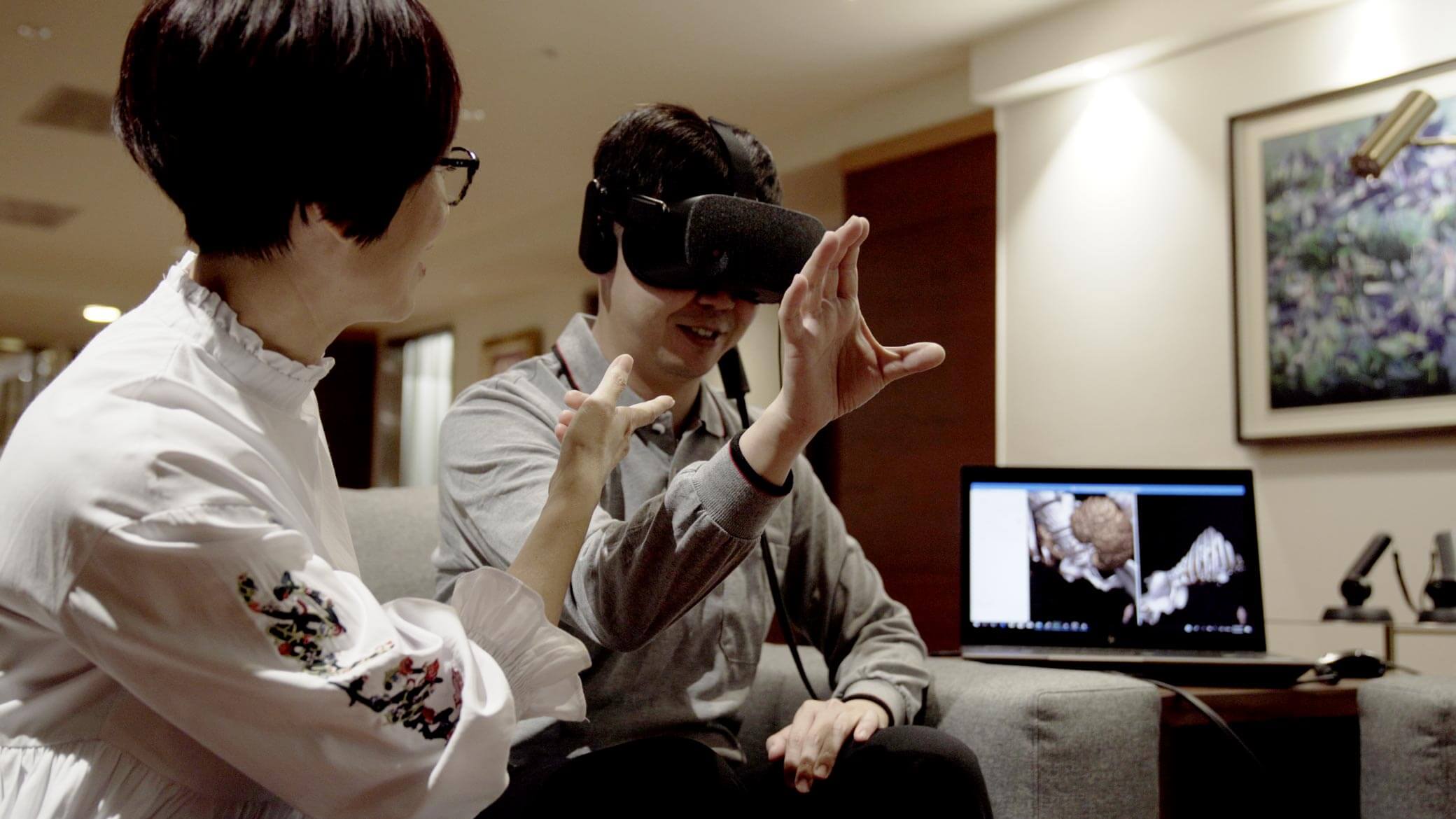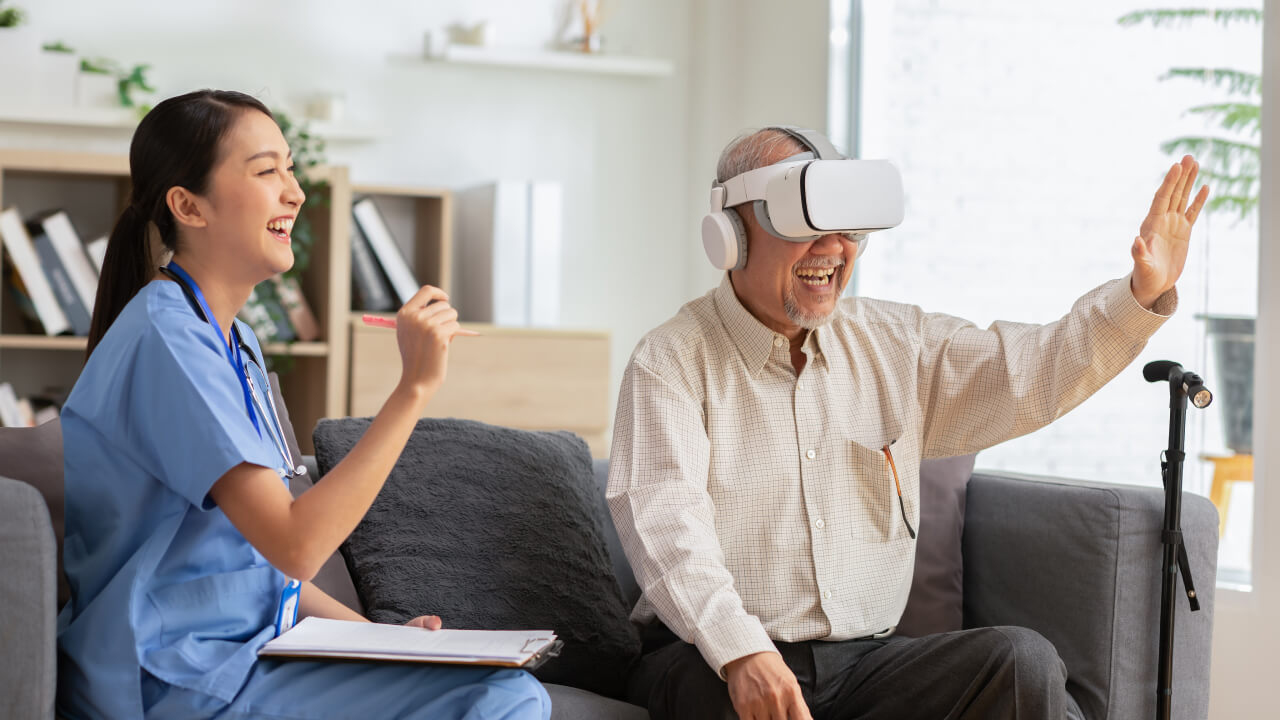VR in Healthcare

Have you ever imagined reading your diagnosis based on thousands of physicians’ opinions at once, or seeing the part of the human body which caused the illness visually without stepping outside your home? These can all come true with virtual reality healthcare.
In this article, we will talk about how VR in healthcare has, is, and will help healthcare professionals transform the lives of patients—from helping pregnant women suffer less in delivering babies, children with cerebral palsy (CP) improve their mobility to patients understand their health conditions at a deeper level.
Benefits of VR in Healthcare for Patient Treatment
VR technologies have been proven to help patients relax, and relieve their anxiety before or during surgeries.
VR headsets worn by patients at St. George’s Hospital in London have helped them relieve anxiety. In the headsets, the patients traveled to exotic places, such as beaches and forests, across the world. The results showed that 100% of the patients felt wearing VR headsets had improved their hospital experience, while 94% said they felt more relaxed.
VR technology can also help women give birth with less pain. Erin Martucci was one of the first women to experience virtual reality during childbirth back in 2016, as The Medical Futurist pointed out. The calming, sunny beach with soothing audio has helped her breathe through the most difficult parts of the labor.
“I was so engulfed in what was going on in the application that I didn’t know two hours had gone by,” said Martucci.
Virtual reality is beneficial for treating children’s mental disorders as well.
Based on a research study from the National Library of Medicine, thanks to VR, children with cerebral palsy (CP) have improved their mobility. The study consisted of 12 VR therapy sessions which lasted one hour a day and 3 days a week for 4 weeks.
During the sessions, the children tried to play sports games, such as basketball, swimming, and tennis, by moving their hands and feet to move better. The results showed those who had received VR physical therapy have better improved their muscle movements, control, and balance.
Virtual reality for healthcare may not be able to “erase” the pain completely yet, but it has been a big distraction for patients and pregnant women to be less anxious, or less fearful of what is happening to them or around them.

Virtual Reality Health Care for Patient Education
Healthcare VR not only treats patients but also educates patients.
For example, this technology is used to reduce blood pressure. In 2017, Holman United Methodist Church partnered with Cedars-Sinai to launch a preventive health program aimed at reducing high blood pressure in the African American community in Los Angeles. Members of the church watched VR videos on their smartphones to learn about the sodium contents of each food displayed.
Watching a deteriorating heart trying to pump blood to the limbs and other areas of the body made a great impact on those who are diagnosed with high blood pressure. This then in turn convinced these individuals to reconsider the purpose of food, and thus increases the chance of lowering their blood pressure.
This is just one example of using VR for an engaging, virtual reality-based health education.
VR technologies can take you inside and show you a tour of your body. They allow you to access and view different parts of the body that were once impossible to reach.
With DigiTwin, patient education is taken to another level. DigiTwin is a medical platform for 3D virtual patient images such as CT and MRI scans.
By using this platform, clinicians, physicians, and surgeons can engage and show patients their “digital twin”—a digital version of their body—to help them better observe their body visually, better understand their diagnosis, treatments, or therapies, and better understand their health conditions.
To read about how virtual reality in medicine is bettering the work of doctors and future doctors (“medical education”), you can check out this article.
Use of Virtual Reality in Healthcare for the Second Opinion
The BMJ has pointed out that to reduce misdiagnoses, we should minimize mistakes that are the result of the limits of human knowledge. That is, if doctors and healthcare practitioners increase their knowledge of a new sickness, especially during the Covid-19 era, the chances of patients being misdiagnosed or mistreated will become lower.
One way to reduce mistakes—while we try to better educate doctors and medical students with BodyMap and AcuMap, the VR anatomy and acupuncture training solutions—is to have more doctors assess the same patient and propose their own diagnoses. This is what we call the “second opinion”, or the so-called “virtual” second opinion.
Some of the benefits of a second opinion include:
- Easier, and quicker access to diagnosis and treatment plans
- Different opinions on your illness
- More accurate diagnosis of your illness
- Better suited treatment plans
When misdiagnoses occur, it could lead to delayed treatments or mistreatments, which could in turn worsen the diseases patients may already be suffering from and result in more painful treatment plans. None of these are what hospitals, clinics, or patients want to go through or endure.
Brigham And Women’s Hospital in Boston already seeks second opinions and provides patients with a consultation in about 7 days in the comfort of their home, especially when they face a new diagnosis or treatment plan.
When patients have complex medical questions or concerns, symptoms that are yet explained or are diagnosed with serious illness, online second opinions can help.
The Future of Virtual Reality for Healthcare
What is the future of VR in healthcare you may ask? Vantage Market Research’s analysis of global AR and VR healthcare finds that the augmented reality and virtual reality healthcare market is expected to reach US$18.7 billion by 2028.
As VR technology becomes more widely adopted, physicians and patients will become more open to the technology.
When technologies of artificial intelligence (AI), virtual reality, blockchain, and cryptocurrency are combined together, they will contribute to a more pleasant, and immersive patient experience in which the patients can better communicate with their doctors, better receive their diagnosis and treatments, and better improve their physical and mental health.